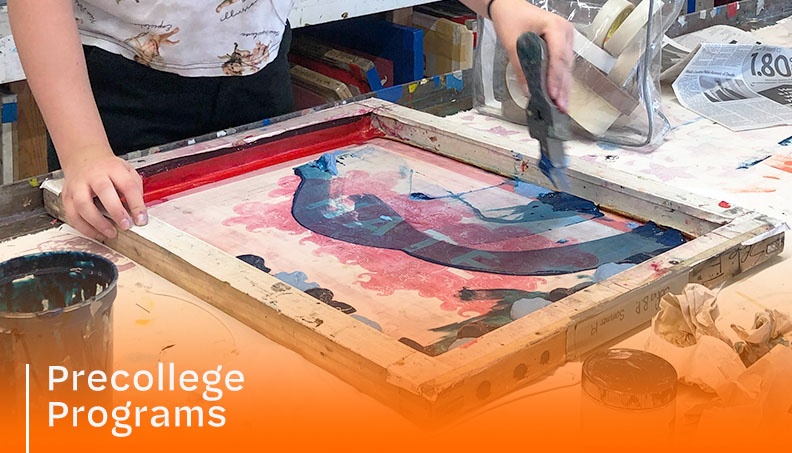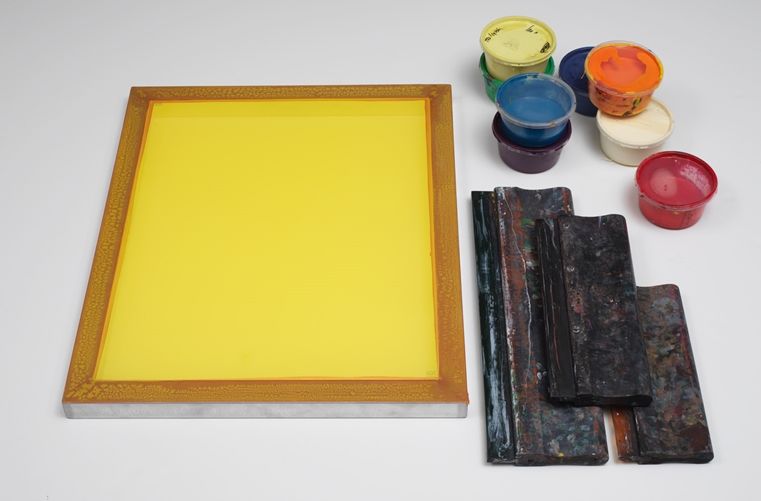The Important Overview to Recognizing Screen Printing and Its Versatile Uses
Screen printing has a rich history that dates back to old times, developing right into an innovative technique utilized throughout numerous markets today. This guide checks out the details of the screen printing procedure, detailing its applications in fashion, marketing, and home style - 10:9 Design Screen Printing. Recognizing these principles can open imaginative possibility for both commercial and artistic jobs. The complying with sections will certainly disclose vital suggestions and techniques to boost one's screen printing ventures
The History of Screen Printing
Screen printing has roots that trace back centuries, its development mirrors the technical and creative advancements of various cultures. Coming from old China, the technique was initially utilized for decorating textiles and later infect Japan, where it ended up being integral to Ukiyo-e woodblock printing. The approach shifted to Europe in the 18th century, where it got popularity amongst artisans and commercial printers. The innovation of image solution in the 20th century reinvented screen printing, allowing for even more intricate layouts and better performance. Artists like Andy Warhol better drove its popularity, making use of the tool to create famous works that blended commercialism and art. By the late 20th century, screen printing had actually developed itself as a functional technique, utilized in style, marketing, and art. Today, it continues to advance, incorporating electronic technology and broadening its applications across different sectors.
The Screen Printing Process Explained
Screen printing transforms imaginative visions right into concrete designs with a collection of accurate steps. A picture is produced and after that moved onto a screen, generally made of fine mesh textile extended over a frame. A light-sensitive emulsion is related to the screen, which is revealed to light, setting in locations not covered by the image. After rinsing the unhardened emulsion, a stencil is formed.
Next off, the screen is positioned over the substrate, whether it be fabric, paper, or an additional product. Ink is after that pushed through the open areas of the stencil using a squeegee, depositing the style onto the substratum below. This procedure can be duplicated for several colors, requiring different displays for every tone. Ultimately, the published thing is treated using heat to ensure the ink sticks properly, resulting in a long lasting, dynamic design on-line.
Sorts Of Screen Printing Techniques

In addition, specialty strategies, such as discharge screen printing, get rid of color from the textile to develop softer prints, while aluminum foil screen printing uses metallic foil to achieve a glossy finish (10:9 Design LLC Company). Each technique supplies distinctive attributes, accommodating various creative needs and production ranges, eventually increasing the opportunities within the screen printing domain
Applications of Screen Printing in Different Industries

Furthermore, the signage and marketing sectors utilize screen printing for producing attractive displays and banners. This approach enables strong colors and detailed layouts that catch attention. In electronics, screen printing is employed for using conductive inks to circuit card, vital for component links. Additionally, the home decoration industry welcomes screen printing to generate unique layouts on textiles and wall art. Overall, screen printing functions as a vital tool throughout varied areas, enhancing items with individualized and visually enticing graphics.
Tips for Successful Screen Printing Projects
While undertaking a screen printing task, careful interest to information can significantly boost the final outcome. Initially, selecting top notch materials is necessary; this includes the screen, inks, and substrates. Utilizing suitable mesh matters can influence ink deposition and detail resolution. Prep work is just as important; complete cleansing of screens and appropriate direct exposure times assure crisp prints.
Next off, accurate registration is important for multi-color prints. Utilizing alignment tools can assist attain specific layering. Additionally, testing prints on scrap products before manufacturing aids recognize prospective problems without losing sources.

Often Asked Inquiries
What Materials Are Finest for Screen Printing on Textile?
Cotton and polyester blends are optimal for screen printing on textile due to their longevity and ink absorption. Furthermore, specialized fabrics like silk or canvas can create one-of-a-kind textures and surfaces, improving the total design high quality.
Just how Do I Tidy and Maintain Screen Printing Tools?
To clean and preserve screen printing equipment, one must frequently clean screens with proper solvents, inspect squeegees for wear, lube moving parts, and store all items in a dry, dust-free atmosphere to lengthen their life expectancy.
What Are the Ecological Effects of Screen Printing?
Screen printing can have substantial ecological impacts, consisting of chemical waste from inks and solvents, water usage during cleaning procedures, and power consumption. Sustainable practices and environment-friendly products are crucial for reducing these negative effects.
Can Screen Printing Be Done at Home Effectively?
Screen printing can be effectively done at home with the right products and strategies. Enthusiasts can create top quality prints, though success depends on their skill degree, devices, and understanding of the procedure included.
What Are the Expenses Related To Beginning a Display Printing Service?

Starting a screen printing business entails costs for equipment, materials, and work space. First costs generally vary from a few hundred to several thousand bucks, depending on the range, high quality of equipment, and preferred production capability.
Screen printing has a rich background that dates back to old times, developing right into an advanced strategy used throughout different industries today. An additional method, rotating screen printing, uses cylindrical screens, facilitating continuous printing on material rolls, therefore boosting performance for large-scale productions. Furthermore, specialized strategies, such as discharge screen printing, eliminate color from the fabric to produce softer prints, while foil screen printing uses metal foil click here to accomplish a glossy coating. In the fashion industry, screen printing is extensively used to create vivid styles on clothing, allowing brand names to display their unique styles. Cotton and polyester blends are suitable for screen printing on fabric due to their sturdiness and ink absorption.